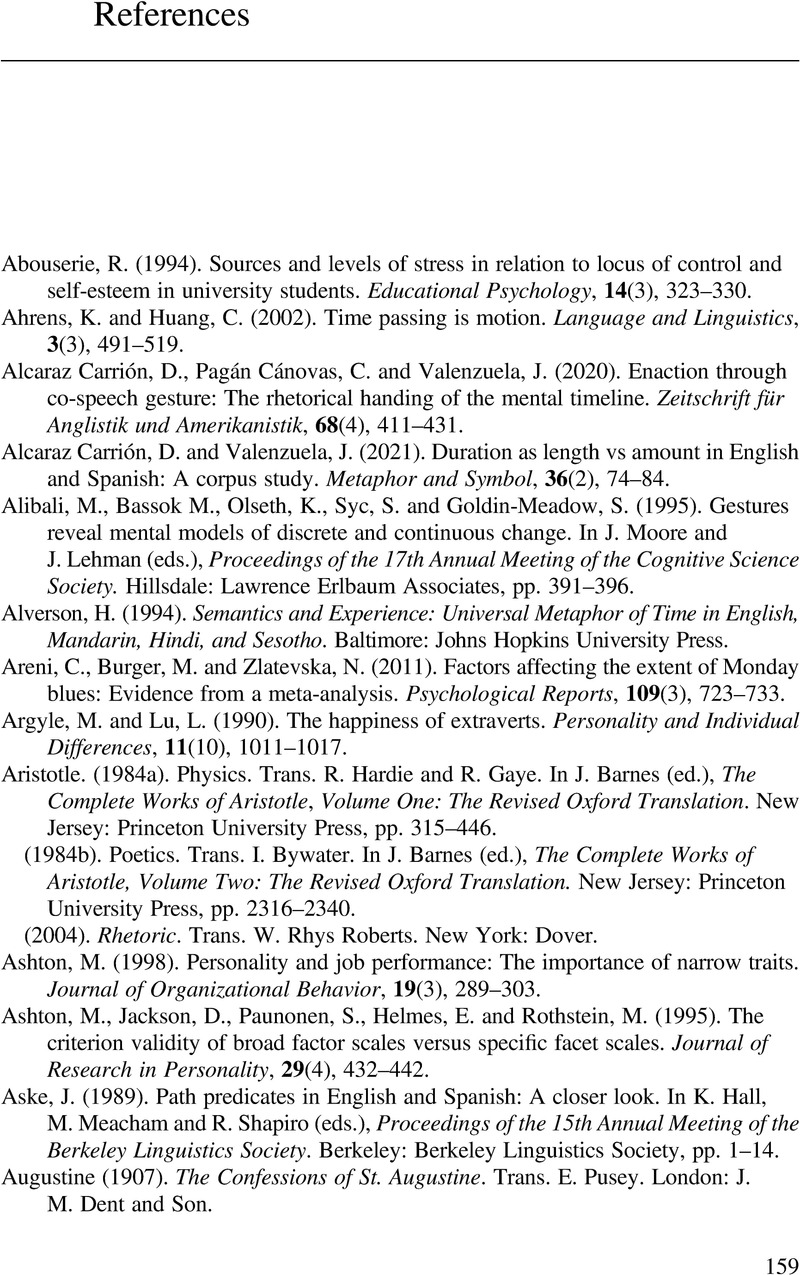Book contents
- Time, Metaphor, and Language
- Time, Metaphor, and Language
- Copyright page
- Dedication
- Contents
- Figures
- Tables
- Acknowledgements
- 1 Introduction
- 2 The Theory of Metaphor
- 3 Metaphor beyond Language
- 4 Time in Space
- 5 Conceptualizing Time through Language and Space
- 6 Bringing in the Cognizer
- 7 Time across Paradigms
- 8 Discussion
- References
- Index
- References
References
Published online by Cambridge University Press: 09 November 2023
- Time, Metaphor, and Language
- Time, Metaphor, and Language
- Copyright page
- Dedication
- Contents
- Figures
- Tables
- Acknowledgements
- 1 Introduction
- 2 The Theory of Metaphor
- 3 Metaphor beyond Language
- 4 Time in Space
- 5 Conceptualizing Time through Language and Space
- 6 Bringing in the Cognizer
- 7 Time across Paradigms
- 8 Discussion
- References
- Index
- References
Summary

Information
- Type
- Chapter
- Information
- Time, Metaphor, and LanguageA Cognitive Science Perspective, pp. 159 - 186Publisher: Cambridge University PressPrint publication year: 2023
